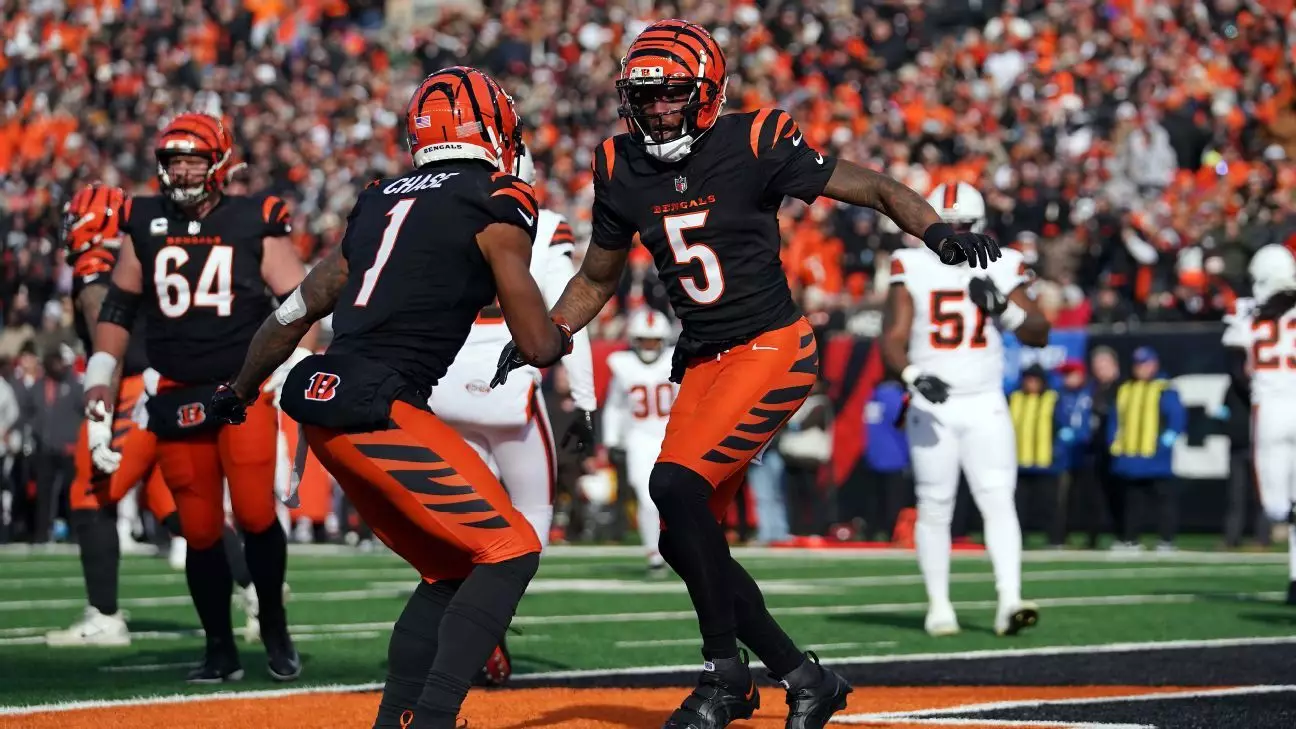The Cincinnati Bengals are poised for a pivotal offseason, employing a strategy that intertwines ambitious goals with significant financial implications. As the franchise looks to lock in key players, the decisions made in the coming months could shape the team’s future. Central to this endeavor are three standout athletes: wide receivers Ja’Marr Chase and Tee Higgins, alongside defensive end Trey Hendrickson. The decisions surrounding their contracts will undoubtedly influence the direction of the Bengals both on and off the field.
The Bengals recognize that retaining their elite talent is crucial for sustained success, particularly as these players prepare for free agency. Tee Higgins, slated to hit the open market on March 12, is a focal point for the organization. Internal discussions suggest that the team may resort to the franchise tag as a temporary solution, providing a buffer that would allow negotiations to continue beyond the impending deadline of March 4. As per sources, utilizing the nonexclusive tag appears to be their strategy, giving Higgins and the Bengals additional time to broker a long-term agreement.
This maneuver is not merely a formality; it signifies the Bengals’ commitment to keeping their core intact. The economics of the franchise tag, which could secure Higgins a salary of $26.17 million for 2025 if no deal is achieved, reflect the premium placed on securing top-tier talent in a highly competitive league. Notably, Higgins’ previous contract under the franchise tag was worth $21.8 million, showcasing a substantial upward trajectory in the financial landscape of NFL contracts.
Following the footsteps of Higgins, the Bengals are also keen to address Ja’Marr Chase’s mounting aspirations. After an explosive 2024 season, where he emerged with standout statistics, including leading the league in receiving yards, touchdowns, and receptions, Chase is looking to solidify his status as the highest-paid wide receiver in NFL history. To achieve this, the franchise will need to navigate the complexities of salary cap regulations while ensuring that their investment in Chase aligns with their overall financial health.
Chase’s potential contract could set a precedent in the league, reflecting the growing trend where elite players command contracts surpassing previous benchmarks. Given the recalibration of financial expectations within the league, the Bengals are entering a bidding war — not only with themselves but also with a broad market eager to secure top-tier talent.
In tandem with the offensive focus, Trey Hendrickson represents the defensive backbone of the Bengals. With an impressive track record of back-to-back seasons recording 17.5 sacks, Hendrickson’s performance places him in a coveted position among elite pass rushers. As teams increasingly prioritize defensive prowess, the landscape surrounding Hendrickson’s contract is significantly influenced by market trends; top pass rushers are now attracting salaries of over $30 million per year. The Bengals must carefully weigh their investment in Hendrickson, especially as other teams may also be reevaluating their own defensive strategies.
Moreover, the increasing volatility in the trade markets, driven partly by stars like Myles Garrett, could drive movements that directly impact the Bengals’ decision-making regarding Hendrickson.
Amidst these negotiations, quarterback Joe Burrow emerges as a pivotal leader advocating for the retention of his key teammates. His openness about potential salary adjustments to enhance cap flexibility signals a proactive approach that may alleviate some financial burdens. Burrow’s articulation of contract restructuring — including converting portions of his salary into signing bonuses — showcases a collaborative mentality rarely seen at the quarterback level. This willingness to adapt demonstrates leadership qualities that could resonate with both teammates and management as they forge a more harmonious financial strategy moving forward.
The Cincinnati Bengals stand at the crossroads of ambition and fiscal responsibility. The offseason will prove critical as they navigate the challenges inherent in retaining star talent while maintaining a competitive roster. Throughout this process, the decisions made in the coming months will be telling of the team’s priorities and its willingness to invest in long-term success.

